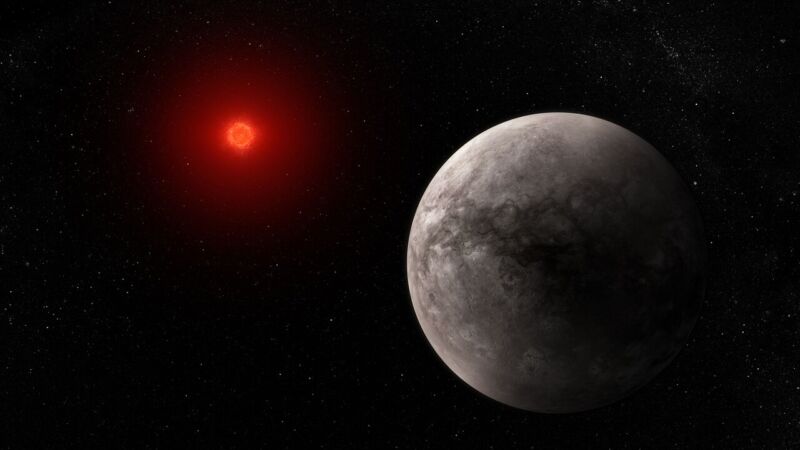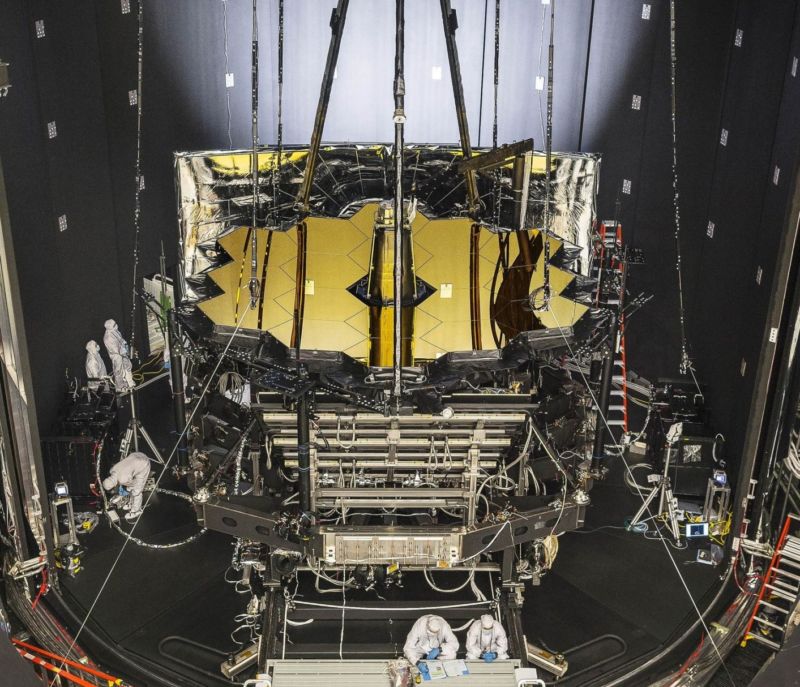
At this point, we've discovered lots of exoplanets that fall under the general label "Earth-like." They're rocky, and many orbit at distances from their host stars to potentially have moderate temperatures. But "like" is doing a lot of work there. In many cases, we have no idea whether they even have an atmosphere, and the greenhouse effect means that the atmosphere can have a huge impact on the planet's temperature. So the Earth-like category can include dry, baking hellscapes like Venus with its massive atmosphere, as well as dry, frozen tundras with sparse atmospheres like Mars.
But we're slowly getting the chance to image the atmospheres of rocky exoplanets. And today, researchers are releasing the results of turning the Webb Space Telescope on a rocky planet orbiting a nearby star, showing that the new hardware is so sensitive that it can detect the star blocking out light originating from the planet. The results suggest that the planet has very little atmosphere and is mostly radiating away heat from being baked by its nearby star.
The ultra-cool dwarf and its seven planets
TRAPPIST-1 is a small, reddish star—in astronomical terminology, it's an "ultra-cool dwarf"—that's about 40 light-years from Earth. While the star itself is pretty nondescript, it's notable for having lots of planets, with seven in total having been identified so far. All of these are small, rocky bodies, much like the ones that occupy the inner portion of our Solar System. While the star emits very little light, the planets are all packed in closer to it than Mercury is to the Sun.
That leaves a number of them in what's called the habitable zone, the area at which the heat delivered by the star could allow liquid water to exist on the planet's surface. But that again depends on the properties of the planet's atmosphere, should one exist. And there are reasons to think planets so close to a dwarf star might lack atmospheres. For the first billion years or so of a dwarf star's existence, it's prone to violent outbursts that could cook off any atmospheres that are not protected by strong magnetic fields.
There's still a chance that geological processes could create a secondary atmosphere after the star settles down. But these atmospheres are likely to be rich in oxygen or carbon dioxide, with little in the way of hydrogen-containing molecules.
So, TRAPPIST-1 provides a fantastic opportunity—really, seven opportunities—to test some of our ideas about exoplanet atmospheres. And both the Hubble and Spitzer space telescopes have imaged some starlight that passes close to some of the planets as they pass between Earth and TRAPPIST-1. These observations didn't provide any indications of an atmosphere, setting limits on how thick any gases above these planets could be.
But there's a lot of uncertainty in those measurements. And the Webb Telescope, with its huge mirror and advanced imaging hardware, offers a new opportunity to take a second look at some of the TRAPPIST planets.



3175x175(CURRENT).thumb.jpg.b05acc060982b36f5891ba728e6d953c.jpg)

Recommended Comments
There are no comments to display.
Join the conversation
You can post now and register later. If you have an account, sign in now to post with your account.
Note: Your post will require moderator approval before it will be visible.